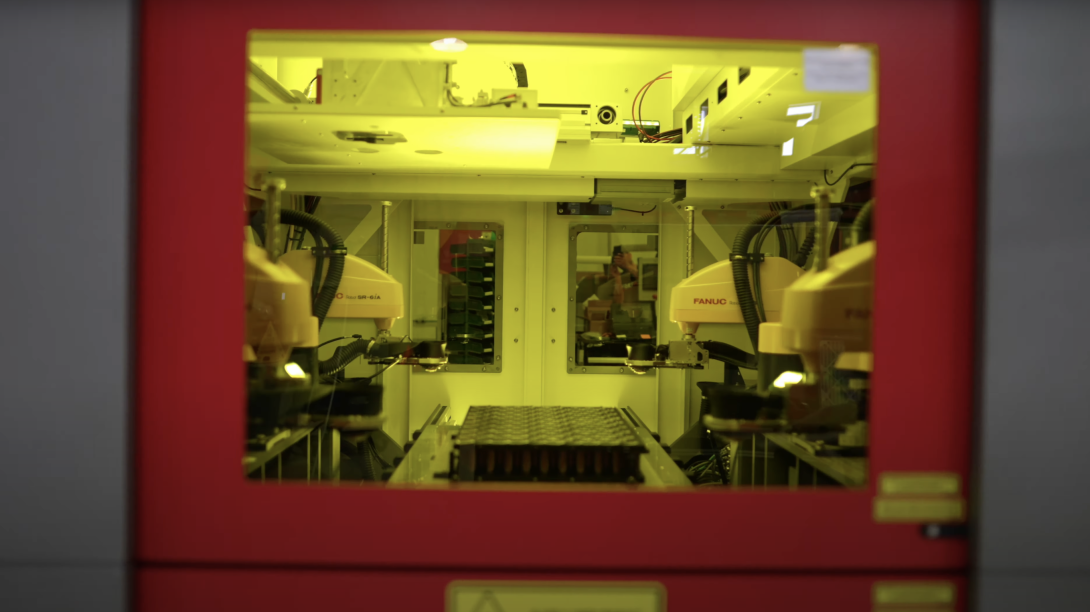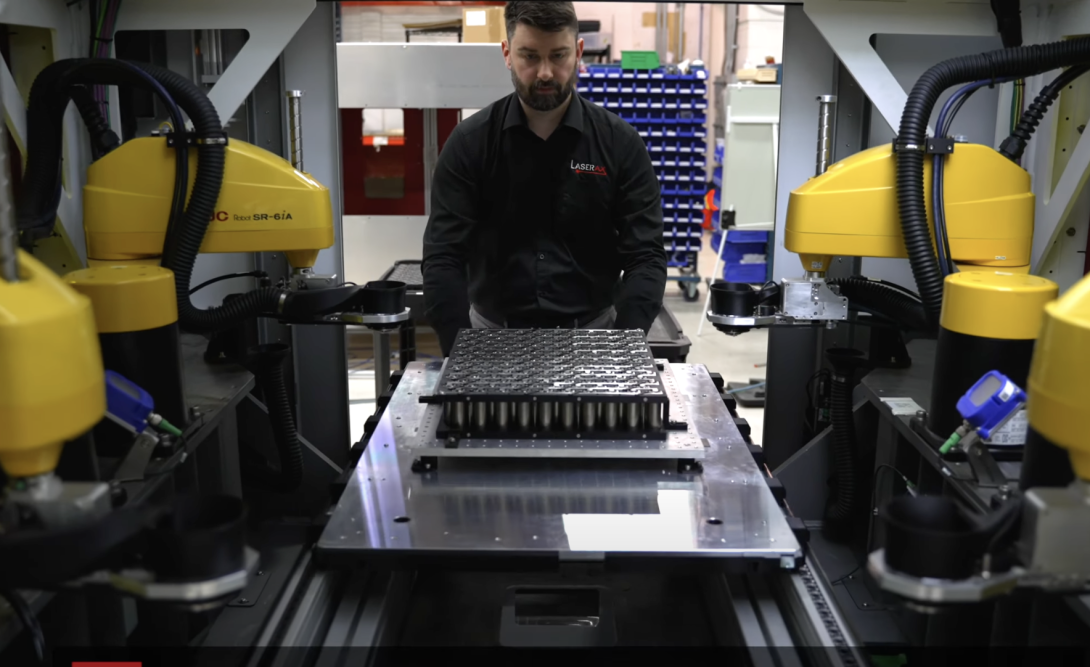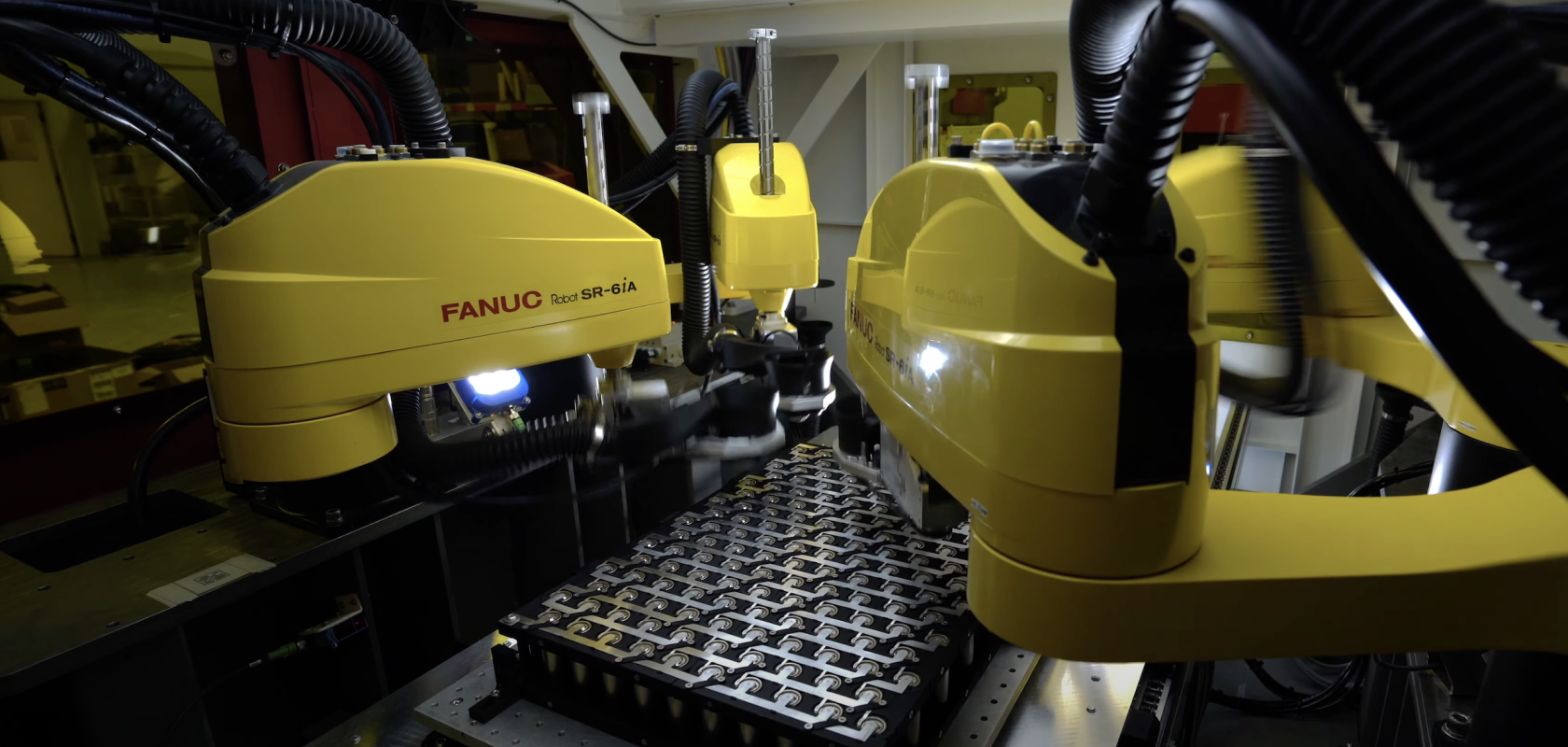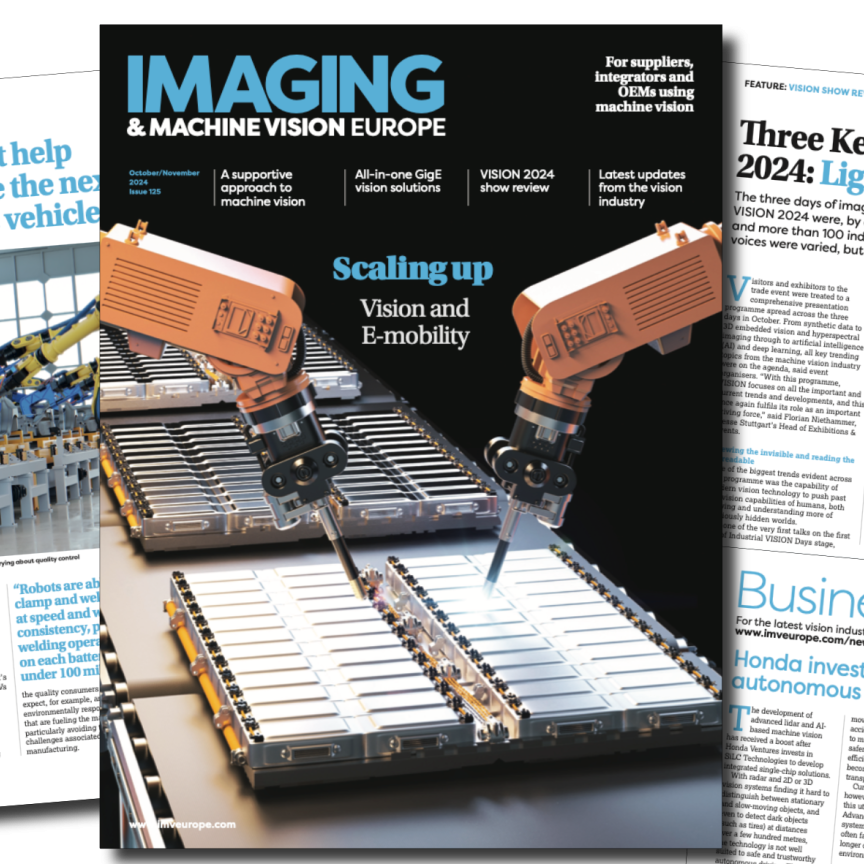In order to meet the rapidly growing demand for batteries, laser solutions specialist Laserax has employed the services of machine vision in its battery welding machine to accelerate battery production.
Wireless power has never been more popular. The increased demand for high-quality, fast-charging and safe batteries in products from electric vehicles to electric screwdrivers means laser solutions provider Laser has entered the market at time when speed, precision and efficiency are more important then ever.
The Canadian company has developed an efficient laser welding solution that means battery modules can be produced in less time and with significantly less waste. “We realised our customers in the battery industry were specifically looking for a solution to weld the current collector and the busbar to the battery module,” said Keven Tremblay, product line manager at Laserax. “Although there were already other methods, they could not offer the necessary speed and quality.”

An outside view of the “Battery Welding Machine”. Image: Laserax
High speed and high precision with near-perfect detection
In combination with MVTec’s HALCON machine vision software, Laserax developed their ‘Battery Welding Machine’ with four SCARA robots inside, used to sequentially clamp and connect the contacts of battery modules using laser welding. Meanwhile, the machine vision software is used to localise the battery cells with micron precision, ensuring the robots can carry out their clamping and laser-welding work with absolution precision guaranteed.
Traditionally, battery production has involved collectors and busbars being connected to battery modules using ultrasonic bonding or other welding methods like spot or resistance welding. The advantage of using laser welding is that it’s capable of performing the task quickly and accurately. However, to ensure that speed and precision came with quality, Laserax combined it with machine vision software. “The software works at top speed, it’s very precise and allows us to get close to our 100 percent detection goal,” said Tremblay.

View of the Battery Welding Machine with the robots. Image: Laserax
How does it work?
Four robots are used to carry out the busbar clamping, while one gantry-mounted laser head with a large field-of-view performs the laser welding itself. In order to ensure the quality and accuracy of the laser and the robots’ teamwork, two cameras attached the side of the laser scan head provide 3D stereoscopic vision of the scene.
In the first step of the process, the cameras take high-resolution images of the battery from above. Then the machine vision software calculates the 3D position of the cells by merging the two sets of images. The provided coordinates are then sent to the clamping robots and the laser system to calculate the precise spot to weld, the robots clamp the current collectors onto the cells and finally, the laser welds the clamped components one after another.

Typical battery cell as it can be processed by the Battery Welding Machine. Image: Laserax
What’s next for Laserax and machine vision?
With Laserax’s customers already using and providing positive feedback on the company’s battery welding machine, thoughts are turning to what else vision technology can do for them. “3D vision and reliable pattern recognition will be explored further in particular,” said Tremblay. “We are looking for a highly reliable and consistent localisation option for specific features.”


